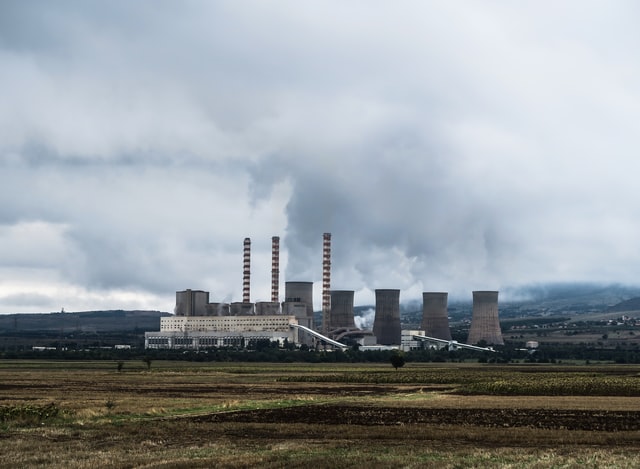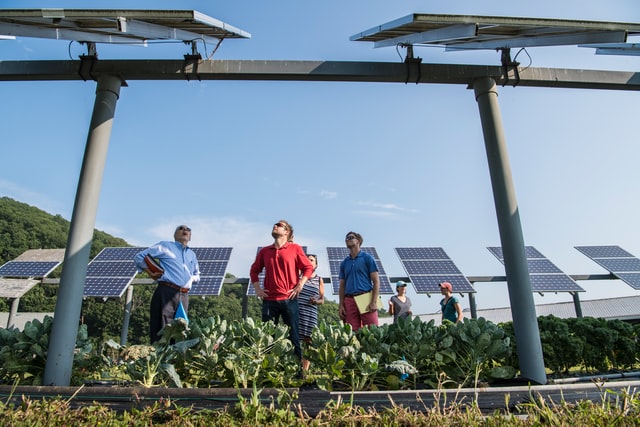
- Sustainable Planet -
- 7mins -
- 83 views
Coal industry suffers four huge financial blows in a fortnight
In the space of just two weeks, four major players in the financing and insurance of the coal industry have withdrawn their support for future expansion and exploration of thermal coal.
Coal suffers major setbacks in March
March has been a bad month for the coal industry. In just two weeks, Swiss Re closed a major loophole in the reinsurance market, announcing the end of support for thermal coal by 2040; Citigroup became the first major US bank to rule out supporting plans for coal plant expansions by new clients; French insurance giant Axa will end its insurance policies with the German utility RWE; and HSBC will allow a resolution on exiting thermal coal to be put to shareholders at its forthcoming annual general meeting.

Swiss Re to phase out reinsuring coal by 2040
On Tuesday 16 March 2021, Zurich-based reinsurers Swiss Re announced it would completely phase out reinsuring the thermal coal industry by 2040. The announcement came as insurers face climate-related losses and get to grips with climate risk in their portfolios. As an interim step, Swiss Re said it would phase out coal exposure by 2030 for those countries belonging to the Organisation for Economic Co-operation and Development (OECD). The measure will affect various business lines, including property, casualty and marine cargo.
Source: Reuters

Citigroup withdraw financial services to the coal sector
Citigroup has become the first major US bank to rule out supporting plans for coal plant expansions by new clients. In the group’s Environmental and Social Policy Framework, published this month (March 2021) it stated –
Furthermore, Citi will not provide project-related financial services for the following:
• New thermal coal mines or significant expansion of existing mines;
• New coal-fired power plants or expansion of existing plants;
• Oil and gas exploration, development and production in the Arctic Circle;
• Projects that negatively impact the Outstanding Universal Value of UNESCO World Heritage Sites;
• Mining projects that utilise submarine waste disposal.
Citi lends and mobilises billions of dollars of capital towards a variety of companies and projects, including sectors that may be associated with environmental and social impacts and risks, so this will come as a massive blow to the coal industry, who depend upon financial backing from banks such as Citi to explore pristine environments and expand on existing mining projects.
Source: Citigroup.com

France’s Biggest Insurer drops German Power Giant Over Coal
In a precedent-setting move for the insurance industry, Axa SA, France’s biggest insurer, is dropping German energy giant RWE AG as a client in a decision that highlights how untouchable the coal industry has become, reported Bloomberg.
Rejecting customers amid Europe’s deepest recession since World War II, shows how, for some companies, climate change has gone from a talking point on panel discussions to a key factor in day-to-day business decisions. Insurers like Axa have a lot of influence, since there are only a handful big enough to cover global customers.
Axa became the first insurer to impose coal-related underwriting restrictions when it made the choice in 2017 and the company stopped providing insurance for coal mines and plants at the end of 2020 after a two-year grace period expired.
With RWE, one of Europe’s biggest coal mine operators and largest emitters of greenhouse gases, Axa is going even further. The French company will sever all its ties with the utility by the end of next year, even refusing to insure RWE’s renewable projects.
Axa’s coal policy prohibits insurance to companies producing more than 20 million tons of coal per year. Last year, RWE extracted 65 million tons, company filings show. RWE’s installed coal capacity surpassed 10 gigawatts in 2020, accounting for 25% of its total power capacity, while renewable energy sources contributed a similar amount.
What makes the move by Axa particularly striking is that RWE, though a major coal producer, has committed to become a carbon-neutral company by 2040. In December, a group of climate scientists gave validation to RWE’s climate targets, saying they were in line with the objectives of the Paris Agreement.
Source: Bloomberg

HSBC tables company vote on phasing out financing of coal
On Thursday 11 March, The Guardian reported that HSBC had bowed to investor pressure by ramping up its climate commitments and tabling a shareholder vote on plans to phase out coal financing by 2040.
Fifteen pension and investment funds, led by the campaign group ShareAction, have agreed to withdraw their own environment resolution ahead of HSBC’s annual general meeting on 28 May.
The investor group – which included Europe’s largest asset manager, Amundi, and Man Group, one of the world’s biggest publicly-listed hedge funds – put pressure on the bank HSBC to reduce those loans and underwriting services offered to clients that relied heavily on fossil fuels. The timeline for action was to be consistent with Paris climate goals.
HSBC’s vote will be binding if it gains the approval of 75% of shareholders. The bank is Europe’s second largest financier of fossil fuels after Barclays, according to the Rainforest Action Network (RAN).
While HSBC recently pledged to shrink its carbon footprint to net zero by 2050, the plan stopped short of a blanket ban on financing coal power.
The new special resolution put forward by its board will commit HSBC to phasing out financing for coal-fired power and thermal coal mining across the EU and OECD by 2030, and across the world by 2040.
Source: TheGuardian

CLEAN ENERGY HAS ALREADY PASSED ITS ECONOMIC TIPPING POINT
What’s bad news for coal is good news for us and for the environment. A 2019 report from the nonprofit Rocky Mountain Institute found that it was cheaper to build and use a combination of renewables like wind and solar than to build new natural gas plants. A 2020 report from Carbon Tracker found that in every single one of the world’s energy markets, it’s cheaper to invest in renewables than in coal.
Graphs recently published on Our World in Data, an online science publication, in partnership with Oxford University, starkly visualise that decline.
Comparing the price of electricity from new power plants in 2009 and 2019, one graph shows how the price of solar photovoltaic power (from solar panels) plummets from $359 per megawatt hour to $40, the cheapest of any of the power options on the chart and an 89% decrease.
If housing prices declined at that same rate, Our World in Data researcher Max Roser writes, a home that cost $3,590 to rent in 2009 would cost just $400 in 2019. Over the same time period, the price of coal barely budged, from $111 per megawatt hour in 2009 to $109 in 2019.
Source: FastCompany

Renewable energy sector generates employment as well as electricity
The renewable energy sector is creating employment in the United States and worldwide.
- According to the 2019 U.S. Energy Employment Report (USEER), 611,000 people worked in zero-emission technology industries, including renewables and nuclear in the United States.
- The International Renewable Energy Agency (IRENA) recorded even higher renewable energy employment in the United States at 855,000 direct and indirect jobs in 2018.
- Jobs in energy efficiency experienced significant growth—the sector now employs more than 3 million people in the United States. IRENA reports that, globally, the renewable energy sector employed 11 million people in 2018, 700,000 more than in 2017.
- According to USEER, jobs in electrical power generation, which includes both renewable and nonrenewable energy sources, declined nearly 1% in 2018. In this sector, USEER reports solar power supporting 242,343 jobs, coal supporting 86,202 jobs, and natural gas supporting 43,526 jobs. Renewable energy firms surveyed for the USEER report highlight that a substantial barrier to increasing employment is finding skilled labour to fill positions.
WORLDWIDE JOBS
The Renewable Energy and Jobs Annual Review 2019 estimates that there were approximately 11,000,000 direct and indirect jobs in the renewable energy sector across the world in 2018. This is an increase from 10.3 million jobs in the sector in 2017.
The eleven primary sectors of renewable energy covered by the report are solid biomass, liquid biofuels, biogas, geothermal, hydropower, solar photovoltaic (PV), Concentrated Solar Power (CSP), solar heating/cooling, wind power, municipal and industrial waste, and tide, wave, and ocean energy. New data on off-grid solar employment in developing countries made it possible to include these jobs in the 2019 report under the solar PV section for the first time.
China continues to lead global employment in renewable energy with roughly 4,078,000 direct and indirect jobs, and Asian countries provided a total of 60 percent of the jobs in the sector.
After China, the countries with the largest employment in renewable energy are Brazil (1,125,000 jobs), the United States (855,000 jobs), and India (719,000 jobs).
The European Union, comprised of 28 countries, had 1,235,000 jobs in renewable energy, making it a significant player in the renewable energy field.
Across the globe, solar PV continues to provide the highest employment in the renewable energy sector, with around 3,605,000 jobs. Biofuels and hydropower followed closely behind, employing around 2,063,000 and 2,054,000 individuals, respectively. The table above provides a comprehensive look at China, Brazil, the United States, India, and the European Union’s total jobs by renewable energy subsector.
Source: EESI

